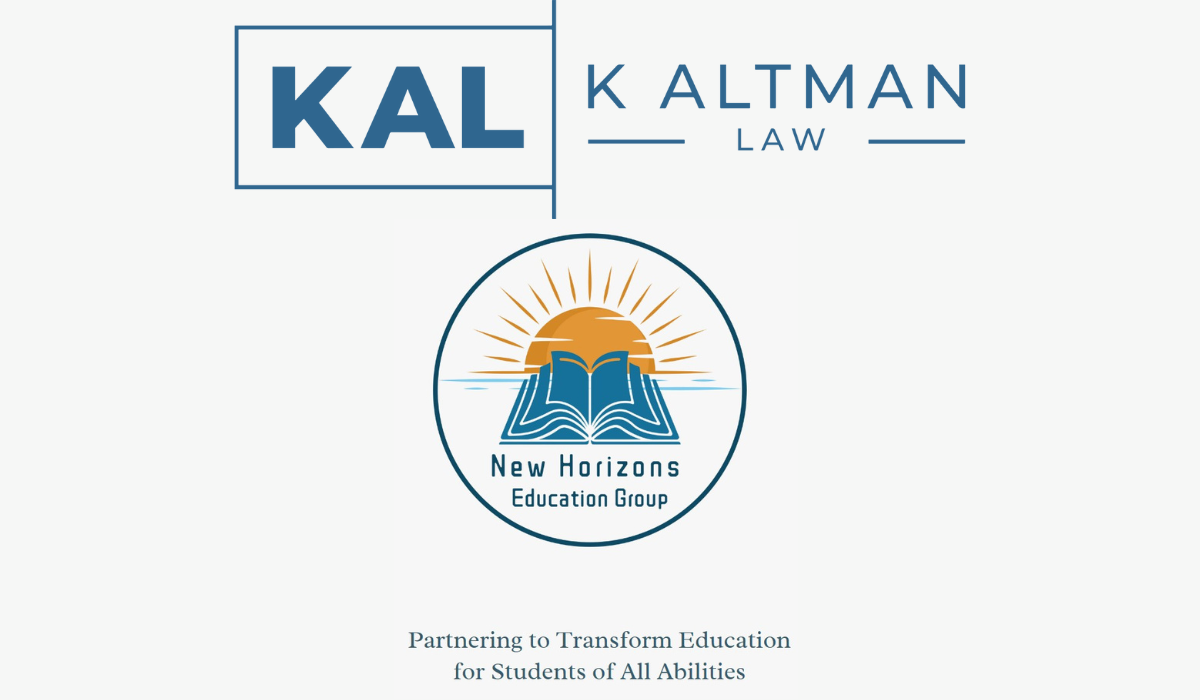It is crucial to understand the children with autism, and their rights at school to ensure they receive the proper care and attention they need. There are laws in place to protect children with disabilities but at the same time they require proper education. To help understand this, one should navigate the legal protections to prevent any type of discrimination against autistic children. It is to ensure they get the education they deserve.
In this blog, we will discuss the details about such legal protections and their impacts.
The Individuals with Disabilities Education Act (IDEA)
One of the most important protection laws for children with autism is the Individuals with Disabilities Education Act (IDEA). It was passed in 1975, and revised several times over the years. The main purpose to introduce IDEA is to ensure children with disabilities can receive a free and public education (FAPE). The revisions for this act now covers the support that schools must provide to every disabled student with autism such as individualized education plans (IEPs).
So if there was a child with autism struggling to learn at a pace with other students, schools must provide necessary adjustments to make them feel supported. IDEA helps such students to focus, help with their communications and learning.
Rights under IDEA for Autistic Children
If your child experiences sensory overload, their IEP may contain adjustments that let them wear headphones that block out noise in noisy areas or give them extra time off during the school day.
Under IDEA, children with autism have certain rights. Among these rights are:
- Special education access: Educational institutions are required to offer tailored services that cater to each student’s specific needs. This could involve behavioral assistance, speech treatment, or modifications for the classroom.
- Individualized education program (IEP): An IEP is required for each child covered by IDEA. This is a formal plan that describes the services the child will receive and establishes learning objectives. Consider it as a road map that directs a child’s academic path.
The Parental Role in Education Advocacy and Planning
You are an important part of your child’s education as a parent. You play a crucial role on the team that creates your child’s IEP under IDEA. You are entitled to express your concerns, make changes to the plan, and ensure that it takes your child’s unique requirements into account.
For instance, you can collaborate with the school to make sure that the teaching materials are modified if you observe that your child learns better when given visual assistance. In order to provide the best learning environment possible, working with educators, counselors, and other experts is just as important as just showing up to meetings as an advocate for your child’s needs.
Educational Rights for Children with Autism
Educational rights for children with autism must be acknowledged. Aspects like FAPE, LRE, and Early Invention (EI) services ensure children get their education.
Free and Appropriate Public Education (FAPE)
FAPE guarantees that all children with disabilities, including autism, get education customized to meet their individual requirements at no expense to the family. Not only should education be given, but it should also be tailored to the individual needs and abilities of the child.
Every youngster has different ideas about what constitutes a suitable education. For example, speech therapy may be part of a child’s strategy if they struggle with communicating. In order to make sure the education is a suitable match, professionals collaborate, parents provide feedback, and evaluations are used to determine what is acceptable.
Together, parents, educators, and specialists create a customized plan just for each kid. By working together, we can make sure that everyone is in agreement with the child’s educational objectives and support.
Least Restrictive Environment (LRE)
LRE states that, while still satisfying their requirements, kids with disabilities—including autism—should learn in settings that resemble regular classrooms as much as possible. Making sure they aren’t unduly isolated from their peers without disabilities is the aim.
While inclusion guarantees the child is completely integrated into the school community, mainstreaming entails placing the child in regular courses with the required support. A youngster with autism, for instance, might get some help in ordinary arithmetic classes but more help when it comes to reading.
The demands of the child will determine the ideal setting. While some students might do well in a traditional classroom, others might require a smaller, more specialized one. Together with the family, the school and I have decided on this after weighing the child’s advantages and disadvantages.
Early Intervention (EI) Services
Children with disabilities, including autism, or those who have developmental delays up to age three are eligible for Early Intervention (EI) programs. By addressing any delays early on, these programs hope to improve results as the kid develops.
The IFSP is a documented plan that specifies the particular EI services, such as occupational therapy or speech therapy, that a child will have. Though it incorporates family-centered goals and is geared toward younger children, it is comparable to the IEP.
Therapies for behavior, motor skills, or communication may be part of EI treatments. For example, a speech therapist may work with an autistic child to help them develop communication skills. These programs have the potential to significantly impact a child’s early development.
Special Education Services
A kid moves from EI services to special education, if necessary, once they turn three. The emphasis moves to developing an IEP and the school assumes responsibility for providing support.
The child’s learning objectives, the services they will get, and any modifications they require are all detailed in the IEP, a legal document. It’s a customized strategy that adjusts to the child’s changing needs.
The IEP is more educationally focused and intended for school-aged children, whereas the IFSP concentrates on younger children and family goals. With input from educators, parents, and other experts, the IEP is created.
Extended School Year (ESY) Services
In order to prevent children with disabilities from losing critical skills, special education services known as ESY services are offered during the summer or other breaks in the school year. Not every child qualifies, but those who exhibit substantial regression during breaks may be.
In establishing ESY objectives and keeping track of advancement, parents are essential. For example, ESY services may involve ongoing reading teaching if a kid loses reading abilities over the summer to help prevent setbacks.
Getting Services Started for a Child
Initiating the Early Intervention Process
The first thing to do is get in touch with your state’s EI program if you are worried about your child’s development. A developmental assessment will be arranged to appraise your child’s proficiency in domains like social interaction, physical skills, and communication. This assessment aids in determining your child’s eligibility for early intervention programs.
For advice, parents can speak with the school district, their pediatrician, or even the local EI programs. To help families get early intervention programs, most states offer websites or hotlines for this purpose. These services vary in cost and are frequently provided for free.
Obtaining Special Education Services
After a kid turns three, the school district assumes responsibility for those services. In order to evaluate the child’s learning needs and establish eligibility for special education services, the first step is to submit a written evaluation request.
A child’s interactions in a learning environment may be observed, speech and language evaluations, and cognitive testing may all be part of the assessment process. By ensuring the kid receives the right services, these evaluations also aid in shaping the IEP.
Schools have a legal deadline of sixty days from the date of the written request to complete evaluations. In order to avoid delays in starting services, it is critical for parents to remain involved, raise questions, and make sure deadlines are met.
Rights to Assistive Technology
To support the autistic children, AT plays a role to enhance learning, communication, and their independence. Therefore it ensures that children have all the tools they need in the education system.
Importance of Assistive Technology
Any tool or gadget that makes it easier for kids with impairments to complete things they might find difficult otherwise is referred to as assistive technology. This can range from communication boards and customized keyboards to speech-to-text software.
When creating an Individualized Education Program (IEP) for a child with a disability, schools are required by the Individuals with Disabilities Education Act (IDEA) to take assistive technology into account. As a result, the IEP team needs to determine whether any particular technologies can improve the child’s ability to access their education.
Accessing Assistive Technology Services
During the IEP process, parents can request an evaluation of assistive technology. This assessment will decide which tools are most beneficial for the child’s learning and how to include them in the lesson plan.
To determine what technology is appropriate for the child, the IEP team—which consists of parents, teachers, and therapists—works together. The optimal solutions for each child’s individual needs and learning style are determined by working together as a team.
A parent may seek an independent evaluation at the school district’s expense if they are not satisfied with the way the school has determined that their kid needs assistive technology. In the event that is necessary, parents also have the opportunity to contest the school’s choices in due process hearings.
Autism Spectrum Disorders (ASD) Overview
In order to make sure their child gets the right support, parents must understand how special education services connect to autism spectrum disorders (ASD). Determining whether a kid with autism qualifies for special education services in a school setting is the goal of the Individuals with Disabilities Education Act (IDEA) eligibility procedure.
Eligibility for Special Education Services
Criteria for eligibility under IDEA
A child’s incapacity to learn in a conventional school setting must be the basis for eligibility for special education services under IDEA. This implies that the social, behavioral, and communicative difficulties faced by autistic children must impede their academic development. Schools carry out in-depth assessments to ascertain whether special education or accommodations are required and how autism affects the child’s capacity to learn in a classroom.
Differences between medical diagnosis and educational identification
Medical practitioners who examine a child’s behavioral and developmental patterns make the medical diagnosis of autism. The child’s day-to-day functioning is the main emphasis of this diagnostic. A kid is not, however, automatically eligible for special education services based just on a medical diagnosis. To ascertain whether a child’s autism substantially affects their academic performance and social relationships in the school setting, an educational identification is made.
For instance, a child with autism may be exceptionally intelligent academically yet find it difficult to interact with others in the classroom. The child’s strengths and problems will be considered by the school when deciding whether to offer an Individualized Education Program (IEP) to support the student’s development.
VDOE Guidance and Resources
When working with kids who have Autism Spectrum Disorders (ASD), educators, administrators, and parents can benefit from the invaluable advice and resources provided by the Virginia Department of Education (VDOE). These resources aid in making sure that students with ASD get the right kind of support and instruction.
Tools for Educators, Administrators, and Parents
Guidelines for educating students with ASD
To assist schools in providing students with ASD with an appropriate education, VDOE offers strict criteria. The significance of evidence-based approaches, tailored teaching, and family and educator engagement are emphasized in these guidelines. Establishing controlled and supportive environments is the aim to enable academic and social success for students with ASD.
Training standards for paraprofessionals
Paraprofessionals are required to fulfill certain training requirements since they frequently offer one-on-one help to students with ASD. In order to meet the specific needs of students with autism, VDOE makes sure paraprofessionals receive training in behavior management, communication techniques, and sensory support. Through this training, paraprofessionals may help students develop critical skills and navigate the school day with effectiveness.
Additional Resources for Autism Support
Virginia Autism Council
The Virginia Autism Council works to enhance support and services for people with autism in Virginia. To help professionals—such as educators and healthcare providers—better understand and address the needs of people with ASD, they offer extensive training resources. Their goal is to guarantee that staff members who assist people with autism are well skilled and provided with resources and continuing education.
Autism Society of America
The mission of the Autism Society of America is to enhance the quality of life for individuals with autism by means of support services, education, and advocacy. Additionally, the organization maintains local affiliates in Virginia that offer family advocacy, support groups, and community-based programs. These regional partners make it possible for families and people with autism to get local resources.
Autism Speaks
One of the top organizations for raising awareness and advocating for people with autism is called Autism Speaks. Their goals are to support early intervention, finance research into the causes of autism, and offer family supports. They hold awareness campaigns and provide communities, schools, and families with toolkits to help them better understand and assist people with autism.
Commonwealth Autism Services (CAS)
Throughout Virginia, Commonwealth Autism Services offers specialized support services to people with autism and their families. Their goal is to help people with autism live better lives by providing family resources, professional development opportunities, and clinical treatments. For families looking for help finding suitable interventions and therapies, CAS is an essential hub.
Interactive Autism Network (IAN)
An online resource that links researchers, families, and autistic persons is called the Interactive Autism Network (IAN). It provides a vast resource database, articles, and discussion boards where users may exchange experiences and find assistance. The goal of IAN is to advance autism research by bringing professionals and families together online in a collaborative and interactive setting.
National Institute of Neurological Disorders and Stroke (NINDS)
NINDS is a research organization that focuses on neurological disorders, including autism. They add to our understanding of autism by offering important information on its neural components. Research projects targeted at enhancing therapies and interventions for people with neurological illnesses are also funded by NINDS.
National Professional Development Center on Autism Spectrum Disorders (NPDC)
The NPDC encourages the application of research-proven techniques in therapeutic and educational contexts for people with autism. Their mission is to make sure educational institutions and other organizations have access to the most up-to-date resources and approaches for supporting people with ASD. They provide resources, technical support, and training to practitioners and educators around the nation.
Ohio Center for Autism and Low Incidence Disabilities (OCALI) Autism Internet Modules
For schools, families, and support providers, OCALI offers free, easily accessible Autism Internet Modules that provide comprehensive learning opportunities. Numerous autism-related subjects are covered in these sections, such as behavior control, communication techniques, and educational interventions. The modules provide evidence-based strategies for helping people with autism and are made to be both practical and easy to use.
Conclusion
Understanding the rights of your child is essential when navigating the complex world of autism support and education. Parents may help guarantee their child gets the greatest support possible by learning about their eligibility for services under the Individuals with Disabilities Education Act (IDEA) and by utilizing a range of resources. Making well-informed decisions is essential for long-term success, whether it’s utilizing assistive technology, interacting with early intervention services, or working with educators to develop an Individualized Education Program (IEP).
Expert advice can make a huge difference while you fight for your child’s legal and educational rights. We at K Altman Law are experts at navigating the legal system for education and disabilities, making sure that you and your kid get the help you need. Allow us to assist you in safeguarding your child’s future and ensuring that they receive a top-notch education. Get in touch for a consultation now with special education advocates at K Altman Law.





